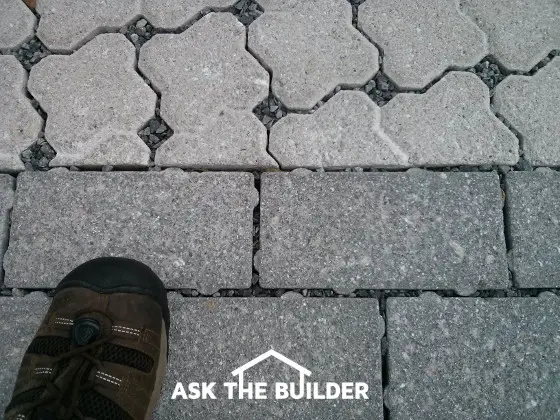Drainage Paving Stones
Drainage Paving Stones
Out in nature when it rains on soil, most of the water goes into the ground. Yeah, this column is about drainage paving stones, but you need to know something first.
I say this assuming:
- it's not a downpour
- the soil is not saturated from days of rain
- the soil isn't frozen
- or some other condition
DISCLAIMER: My college degree is in geology, so I can talk about this with a fair amount of authority. 😉
This rain water eventually might flow into the bedrock to help recharge and maintain the groundwater supply.
It can also flow across the top of a dense layer of deep-clay subsoil or where the bedrock comes close to the surface and then pop back out of the ground. This is how a natural spring works.
Hard Paving DISRUPTS Natural Process
Blacktop, concrete, old-style paving brick house roofs, etc. disrupt this natural process. These surfaces can cause rainwater to bypass the soil and travel directly to storm sewers.
When this happens, the ground water gets starved for moisture.
New Drainage Paving Stones
New style paving stones are now available that have gaps between the stones that allow water to get back into the soil. Brilliant!
The gaps are filled with tiny pieces of crushed or rounded gravel. Smart!
